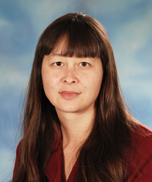- About Ramapo
- Academics
- Admissions & Aid
- Student Life
- Athletics
- Alumni
- Arts & Community
- Quick Links
- Apply
- Visit
- Give
Yvette Kisor
 Professor of Literature
Professor of Literature
Year Joined RCNJ: 2004
Contact Information
- Phone: (201) 684-6212
- Email: ykisor@ramapo.edu
- Office: B-142
- Office Hours: On Sabbatical for Fall 2025
- Department Website
OnEducation:
- B.A., Rice University
- M.A., University of California at Davis
- Ph.D., University of California at Davis
Courses Offered:
- Survey of British Literature: Anglo-Saxon Period to Eighteenth Century
- British Medieval Literature
- Author Studies: Chaucer
- The Medieval and the Modern in Tolkien’s Middle-earth
- Topics in Popular Literature: Harry Potter
- Senior Seminar: Arthurian Literature
- Honors First-Year Seminar
- Readings in the Humanities
Teaching Interests:
- Old English Language and Literature
- Middle English
- Beowulf
- Chaucer
- History of the English Language
- Tolkien
- Gender Issues
Research Interests:
- Greek and Latin Texts
- Computer-assisted Textual Analysis
- Tolkien’s Use of Medieval Forms in his Fiction
Scholarly Activity:
- “‘We Could Do with a Bit More Queerness in These Parts’: An Analysis of the Queer against the Peculiar, the Odd, and the Strange in The Lord of the Rings.” Journal of Tolkien Research, vol. 16, issue 1, 2023, article 4.
- “‘The Lay of Aotrou and Itroun’: Sexuality, Imagery, and Desire in Tolkien’s Works.” Tolkien Studies, vol. 18, 2021, pp. 19-62.
- “Children’s Beowulfs for the New Tolkien Generation.” Beowulf as Children’s Literature: Studies in Adaptation for Youth. Britt Mize and Bruce Gilchrist, eds. University of Toronto Press, 2021, pp. 243-64.
- Tolkien and Alterity. Christopher T. Vaccaro and Yvette Kisor, eds. The New Middle Ages. Palgrave, 2017.
- Beowulf Unlocked: New Evidence from Lexomic Analysis. Michael D.C. Drout and Yvette Kisor et al. Palgrave, 2016.
- “Queer Tolkien: A Bibliographical Essay on Tolkien and Alterity.” Tolkien and Alterity. Christopher T. Vaccaro and Yvette Kisor, eds. The New Middle Ages. Palgrave, 2017, pp. 17-32.
- “Using the History of Middle-earth series with Tolkien’s Fiction.” MLA Approaches to Teaching: J. R. R. Tolkien’s The Lord of the Rings and Other Works, ed. Leslie Donovan. New York: Modern Language Association of America, 2014. 133-43.
- “Poor Sméagol: Gollum as Exile in The Lord of the Rings.” Author of the New Century: T. A. Shippey and the Creation of the Next Canon, ed. John William Houghton, Janet Brennan Croft, Nancy Martsch, John D. Rateliff, and Robin Anne Reid. Jefferson, NC: McFarland, 2014.
- “‘naked as a nedyll’: The Eroticism of Malory’s Elaine.” Sexual Culture in Medieval Britain, eds. Amanda Hopkins and Cory James Rushton. Cambridge: D.S. Brewer, 2014. 38-47.
- “Incorporeality and Transformation in The Lord of the Rings.” The Body in Tolkien’s Legendarium: Essays on Middle-earth Corporeality, ed. Chris Vaccaro. Jefferson, NC: McFarland, 2013. 20-38.
- “There’s Magic in the Web of It: Desdemona’s Handkerchief and the ‘Magic’ Cloths of Emaré and Le Fresne.” Translating the Past: Essays on Medieval Literature in Honor of Marijane Osborn, ed. Jane Beal and Brad Busbee. Tempe, Arizona: ACMRS Press, 2012. 131-44.
- “Narrative Layering and ‘High Culture’ Romance in the Twilight Series.” The Twilight Mystique: Critical Essays on the Novels and Films, ed. Amy M. Clarke and Marijane Osborn. Critical Explorations in Science Fiction and Fantasy 25. McFarland, 2010, pp. 35-59.
- “The Aesthetics of Beowulf: Structure, Perception, and Desire.” On the Aesthetics of Beowulf and Other Old English Poetry, ed. John Hill. Toronto: University of Toronto Press, 2010. 227-46.
- “Totemic Reflexes in Tolkien’s Middle-earth.” Mythlore 109/110 (Spring/Summer 2010): 129-40.
- “Numerical Composition and Beowulf: A Reconsideration.” Anglo-Saxon England 38 (2009): 41-76.
- “Harthgrepa.” ANQ, vol. 20, no. 2, Summer 2007, pp. 63-5.
- “‘Elves (and Hobbits) always refer to the Sun as She’: Some Notes on a Note in Tolkien’s The Lord of the Rings.” Tolkien Studies, vol. 4, 2007, pp. 214-24.
- “Moments of Silence, Acts of Speech: Uncovering the Incest Motif in the Man of Law’s Tale.” The Chaucer Review, vol. 40, no. 2, 2005, pp. 141-62.
Ramapo College of New Jersey recognizes the value of publishing on the Internet. The College does not preview, review, censor, or control the content of these pages in any way as a matter of course. This page and Web pages linked from this page are created by the authors, and do not in any way constitute official Ramapo College of New Jersey content.
Copyright ©2025 Ramapo College Of New Jersey. Statements And Policies. Contact Webmaster.

Follow Ramapo